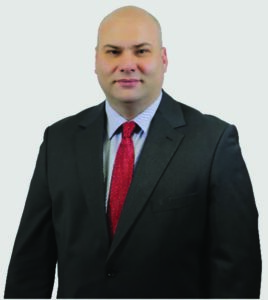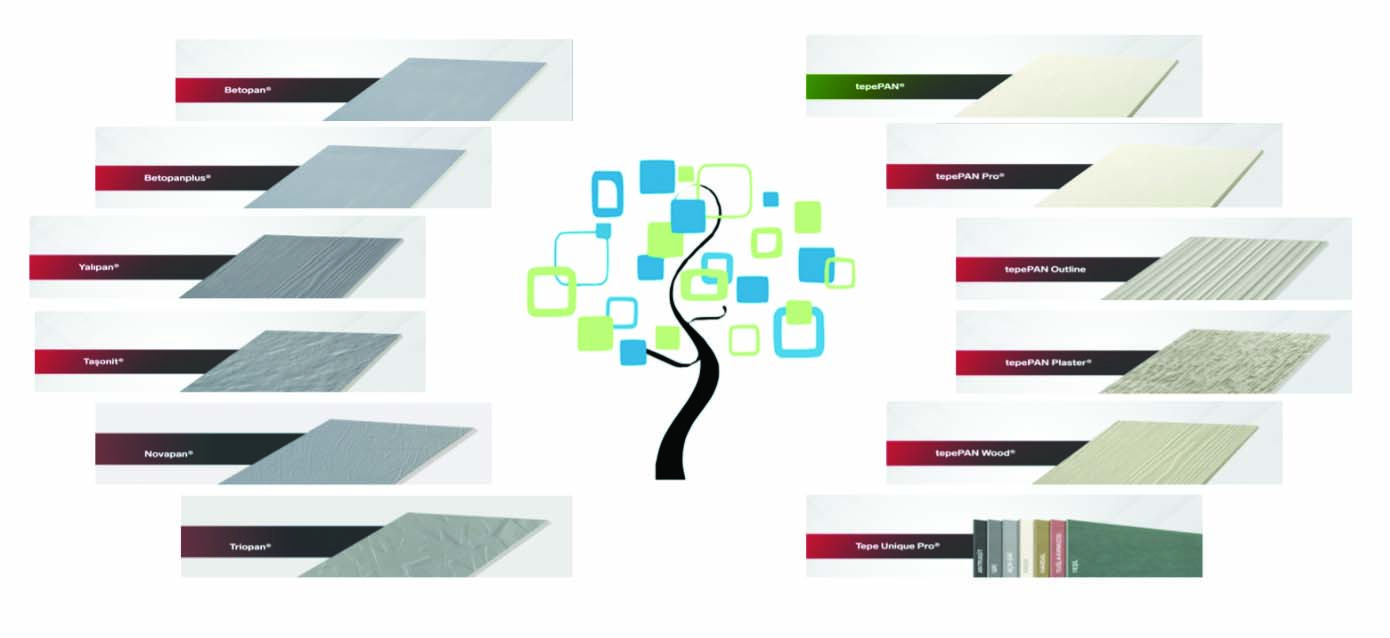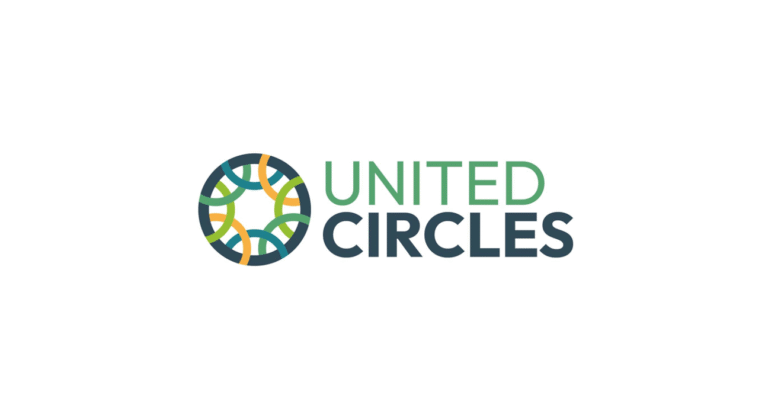United Circles, where sustainability goals meet local implementation, stands out as a flagship initiative that brings the European Union’s circular economy vision to Türkiye. This initiative, which transforms construction and demolition waste into valuable resources, is being implemented around the Ankara Circularity Hub (H4C), based on an industrial-urban symbiosis model.
Led by Baştaş Cement in process coordination, the project brings together MINOVA’s XRT-based smart sorting systems, Tepe Betopan’s innovations in sustainable building materials, and Türkiye İMSAD’s efforts for sectoral integration under the coordination of Ekodenge. Together, they present a harmonized model for transitioning to a circular economy.

Dr. Tülay Çağlayan ÖZLÜ
Director of Circular Economy and Digital Industrial Solutions / Ekodenge A.Ş.
Ankara Hub for Circularity: A Gateway to Türkiye’s Sustainable Future
The transition to a circular economy offers an effective and necessary solution to the unsustainable pressures caused by resource scarcity, the climate crisis, and urbanization. At the heart of this transformation are the Hubs for Circularity (H4C), promoted by the European Commission and developed under Horizon Europe. In Türkiye, the Ankara Hub for Circularity has taken on the pioneering role of advancing this vision and plays a critical role as one of the first TRL7- scale demonstration centers based on industry-urban symbiosis, supported by the Horizon Europe project “United Circles.”
Ankara H4C hosts the first fully integrated value chain aimed at bringing construction and demolition waste (CDW) into the circular economy. Technologies featuring numerous firsts are being tested at this center, including new-generation cements produced with carbonated recovered cement mixtures, the first PIR foam produced using recycled aniline, cement-bonded particle boards (CBPB) developed with 50% recycled material, and the use of these materials in building construction through 3D printing technologies.
In this context, the Hub in Ankara serves not only as a technical demonstration site but also as a transformation zone where social, economic, and environmental benefits are deeply intertwined. According to the United Circles Social Impact Assessment framework, Ankara H4C aims to realize the vision of “safe and circular reconstruction” through the use of environmentally and socially sustainable materials in the rebuilding of 280,000 buildings destroyed in the 2023 earthquakes.
The center is operated under the leadership of EKODENGE and with the active participation of private sector leaders such as BASTAŞ (innovative cement), TEPE Betopan (particle boards), COVESTRO (chemical recycling), and MİNOVA (smart sorting systems). This publicprivate collaboration model prioritizes not only industrial transformation but also values such as employment, capacity building, transparency, and social inclusion. With the contribution of Türkiye İMSAD, the development of quality standards for recycled building materials is creating a strong leverage effect for both domestic markets and exports.
Additionally, Ankara H4C offers significant environmental benefits. The project demonstrates not only technical but also ecological impacts, such as reducing carbon emissions in CDW management, saving energy through the use of secondary raw materials in cement production, and achieving substantial improvements in air quality.
Hubs for Circularity are not just sites for technology development, they are also transformation platforms where socio-economic justice is ensured, local capacity is strengthened, and ministries, municipalities, NGOs, universities, Organized Industrial Zone administrations, and citizens actively participate in the process. While enabling Türkiye to take a leading role in the circular economy, the Ankara Hub for Circularity also contributes to shaping international practices by sharing knowledge with similar centers across Europe.
In this respect, Ankara H4C is a model center that implements the circularity vision holistically by combining technical excellence with solutions tailored to local needs. Expanding similar H4Cs is of critical importance for Türkiye to achieve its sustainable development goals.

Mete Emre ERGÜÇLÜ
General Manager / Vicat – Çözüm Endüstriyel Atık İşleme A.Ş.
Baştaş Cement: Pioneering Steps in Integrating C&DW into the Production Cycle
As a VICAT Group company, Bastas Cement plays a leading role in the United Circles Project, particularly by coordinating the Construction and Demolition Waste (C&DW) demonstrator in Ankara, Türkiye. Our main responsibility is to design and implement a fully circular C&DW upcycling process, progressing innovative technologies from TRL 5 to TRL 7. In our role as process leader of the Ankara Hub for Circularity (H4C), we collaborate with partners such as Minova, Tepe Betopan, Covestro, and Fraunhofer to deliver a first of a kind (FOAK) demonstration: a two-storey building made entirely of upcycled materials, showcasing a zero-waste approach to urban construction.
 Figure 1: United Circles Ankara H4C Concept
Figure 1: United Circles Ankara H4C Concept
At the center of our work is the utilization and scale-up of upcycling of hydrated cement paste (HCP), as a fraction of concrete, through accelerated carbonation technology. This involves expanding carbonation process capacity from 1 to 5 tons/hour, integrating precision feeding systems, and employing advanced tracing, controlling and sensor technologies for optimal process control. The goal is to produce high-quality upcycled material based on Carbo Force™ blended cement that meets both performance and certification standards.

Figure 2: Industrial Scale Accelerated Carbonation Reactor Design
As Bastas Cement we bring together multiple technologies and partners into a coherent, scalable value chain. By combining material innovations, process control, and strategic collaboration, we offer a technically sound and economically viable model for circular construction. Our work supports the broader objectives of the EU Green Deal and Fit for 55 by reducing landfill dependency, lowering carbon emissions, and turning urban waste into highvalue construction materials. Furthermore, social impact is one of the major subjects Bastas Cement focuses. Through the Ankara H4C, we engage local communities, raise awareness of circular practices, and integrate socio-economic indicators to address challenges such as the siting of waste facilities in underserved areas. In partnership with Ekodenge and other stakeholders, we host workshops and public outreach activities to build trust and promote the use of upcycled materials in everyday construction.
The two-story building to be constructed using a 3D printer on the Baştaş Cement factory site in Ankara will incorporate multiple advanced technologies. The structure will be built using a specially developed mortar suitable for 3D printing with Carbo Force™ cement, which will be developed by Bastas as well. The walls will be completed using cement-bonded particle boards (CBPB) as façade elements supplied by Tepe Betopan, and PIR foam recycled by Covestro and Fraunhofer will be used for insulation. This concept building will serve as proof of the commercial viability of circular solutions in the construction sector, while reducing embedded carbon.

Figure 3: 2-storey building construction by 3D printer with Carbo Force™ Cement
In addition to the demonstration, Baştaş Cement is helping shape the governance and culture of the H4C by working with Ekodenge, IMSAD, and Intract to expand regional engagement. Our strategy includes supporting seed hubs, mentoring early-stage initiatives, and fostering collaboration amongst industry, SMEs, municipalities, and civil society actors. Through our efforts, Bastas Cement is positioning to be a leader in circular construction by transforming C&DW into a valuable resource, we contribute to EU climate goals, stimulate green investments, and help build a more sustainable future for the construction industry.

Assoc. Prof. Dr. Ergin GÜLCAN
Hacettepe University
Department of Mining Engineering UNITED CIRCLES-MINOVA
XRT-Based Smart Sorting Systems: The Future of Construction Waste and MINOVA’s Pioneering Role in the United Circles Project
Across the globe, rapidly growing cities are shaping our future not only through the rise of skyscrapers and highways but also via the vast amounts of demolition waste they leave behind. Each new construction typically begins with the dismantling of an older structure, contributing to a cycle that generates millions of tons of construction and demolition waste (C&DW) annually-accounting for approximately 30% of global solid waste. In countries like Türkiye, where urbanization and urban renewal are progressing rapidly, C&DW is increasingly being regarded not as an environmental threat, but as a strategic resource that must be valorized. However, this transformation is only achievable through the integration of advanced technologies, robust regulatory frameworks, and well-coordinated smart systems at the municipal level. This is where X-ray Transmission (XRT)-based smart sorting technologies offer a groundbreaking potential for the sector.
In Türkiye, many municipalities still rely on conventional methods to manage C&DW, either on-site or via landfilling. Yet, the National Waste Management Action Plan (2023-2030), issued by the Ministry of Environment, Urbanization, and Climate Change, sets forth ambitious targets such as on-site sorting, traceability, and integration of C&DW into the circular economy. In this context, the combined systems solution developed by MINOVA is not only a technological innovation but also a practical instrument for implementing national environmental policies on the ground.
As part of the EU-funded United Circles project, MINOVA-representing Türkiye as a project partner, aims to pioneer this transformation through its system solution incorporating XRT-based multi-sensor sorting. Unlike conventional methods that typically classify materials based on color, shape, or surface characteristics, XRT systems perform highly precise sorting by analyzing materials’ atomic density and chemical composition.
MINOVA’s integrated system aims to synchronize a comprehensive set of four critical sensor technologies. XRT (X-ray Transmission) sensors measure the atomic density (g/cm³) of waste materials to identify substances such as concrete, wood, and ceramics. XRF (X-ray Fluorescence) analyzes the chemical composition of metal alloys, detecting elements like iron (Fe), aluminum (Al), and copper (Cu). NIR (Near-Infrared Spectroscopy) distinguishes between different polymer types, such as PUR, PVC, and PS, within the 1,400-2,500 nm spectral range. HIS (Hyperspectral Imaging) maps surface texture and color parameters in three dimensions. This fusion of sensor technologies, integrated with material preparation units and hydrated cement paste separation mechanisms, enables more precise identification and sorting of waste components. The system allows for the recovery of secondary raw materials for various industries, contributing significantly to Urban-Industrial Symbiosis.
Compared to traditional systems, XRT technology offers significant advantages. While conventional sorting systems typically achieve 70- 80% efficiency, the MINOVA XRT System solution targets over 90% recovery rates. A key success metric is the efficient separation of concrete containing hydrated cement paste (HCP), which is essential for producing low-emission cement with high carbon capture potential. As such, XRT-based recovery represents a substantial opportunity for Türkiye. Economically, it can reduce construction costs by 15-20% and offers a potential annual savings of €1.2 million. Environmentally, a system with a processing capacity of 10 tons/hour is projected to reduce CO₂ emissions by 8,400 tons annually, equivalent to the amount of CO₂ sequestered by approximately 350 hectares of forest in one year.
XRT-based smart sorting technology is poised to serve as a transitional tool from traditional construction materials to sustainable alternatives. Its integration into the existing industry enables C&DW and earthquake debris to be recovered and reused rather than landfilled, thereby reducing dependence on virgin raw materials such as natural aggregates, timber products, and especially cement clinker. The reuse of cementitious materials recovered from waste can partly substitute new clinker production, thus lowering both energy consumption and process-related CO₂ emissions. Additionally, the carbonation step chemically binds significant amounts of CO₂ into the waste cement paste, further reducing the total carbon footprint of the process.
Ultimately, XRT-based multi-sensor smart sorting systems hold the potential to close the loop for construction materials, supporting sustainability goals and the vision of “zero-waste cities.”
MINOVA’s intelligent sorting and separation approach is poised to make a transformative contribution to Türkiye’s predominantly conventional C&DW management systems by integrating high-end technologies, real-time data analytics, and quality-focused reuse principles. This, in turn, will enable the development of new waste reuse and traceability policies across a broad spectrum, from local municipalities to private sector facilities.

Figure 4. XRT Technology Integration to UNITED CIRCLES HUB
 Figure 5. Smart Sorting Solutions
Figure 5. Smart Sorting Solutions
“XRT-based sorting technology is among the most promising engineering solutions for a sustainable future, transforming waste into strategic resources and redefining the eco-economic paradigm of construction.” – Assoc. Prof. Dr. Ergin GÜLCAN

Buğçe CANLI
R&D Manager / Tepe Betopan Yapı Malzemeleri A.Ş.
Industrial Symbiosis-Based Material Transformation: The Future of Construction Waste and Tepe Betopan’s Strategic Role in the United Circles Project
Tepe Betopan Building Materials Inc. has joined the United Circles project with a sense of responsibility to lead the sustainable transformation of the building materials sector. As a company operating in this industry for over 40 years, developing solutions for the revalorization of waste materials forms a cornerstone of our vision for a circular economy.

Figure 6: Tepe Betopan Product Portfolio
Our main role in the United Circles project is to transform construction and demolition waste into high-performance, environmentally friendly products through innovative technologies, specifically for the production of cement-bonded particle boards (CBPB). In this context, our R&D and innovation efforts focus particularly on the alkaline pretreatment of waste wood and the integration of alternative low-carbon binders such as Carboforce™ cement. These methods, aimed to be implemented on an industrial scale for the first time in Türkiye, will enable the partial or complete substitution of conventional raw materials, carrying significant transformation potential for the sector.

Figure 7: Tepe Betopan’s Role in the United Circles Project
At Tepe Betopan, we are not only focused on environmental impacts through technological innovation but also on creating social impact and societal benefit. In this regard, we are planning training programs to support workforce transformation, including on-site technical training and workshops to enhance digital skills. As waste-based production processes are implemented, training activities will also be extended to local technical personnel and future engineers.
To contribute to local development, we encourage the sourcing of sustainable materials locally within the supply chain. Moreover, we aim to ensure that the outcomes of the project go beyond our internal production by integrating them into urban planning and sustainable construction in collaboration with local governments and stakeholders in architecture and urbanism.
Through field implementations and demonstration structures, we aim to prove that the developed technologies go beyond theoretical concepts and demonstrate their transformative impact in practice. As part of our project, advanced cement-bonded particle boards containing alkaline-treated waste wood will be used for the façade and interior cladding of a two-story demo building constructed with 3D printing technology by Baştaş Cement using Carboforce™ cement. This structure will stand as a tangible outcome of industrial symbiosis, reflecting circular production approaches in the field. The collaborative implementation process with local stakeholders also contributes to creating spaces for social interaction and plays a role in raising awareness.
The alkaline treatment reactor we plan to establish within the scope of the project is designed to be the first of its kind in Türkiye. Through this system, the physical and chemical properties of waste wood will be enhanced, allowing it to be used in CBPB production without compromising performance or quality.

Figure 8: Alkali Treatment Reactor to be Manufactured and Installed for the Alkali Processing of Waste Wood

Figure 9: The Detailed Cellular Structure of Wood and the Effect of Alkali Treatment Reactions on the Molecular Structure of Wood
Another first-of-its-kind initiative we are implementing within United Circles is a pilot study on Digital Product Passports (DPP). The passport to be developed will enable tracking of product recyclability, content transparency, and carbon footprint—bridging digitalization and sustainability in the construction materials sector.
Additionally, through Life Cycle Assessment (LCA) applications, we plan to systematically analyze the environmental impacts of our products, providing a data infrastructure to support sustainable design decisions.
Another goal of the United Circles project is to contribute to building a collaborative circular interaction network. This structure is based on knowledge sharing, collective learning, and co-creation of solutions, prioritizing active participation from a wide range of stakeholders—from industry to local government, from academia to civil society. The technical meetings, site visits, and international exchanges we will carry out throughout the project will support the vitality of this network.
The solutions we are developing for Türkiye will help define the role of the construction sector in achieving climate targets, in parallel with the improvement of the waste management infrastructure. We are proud to demonstrate, through United Circles, that circular production is both possible and practicable.

Aygen ERKAL
Secretary General / Türkiye İMSAD
A Circular Approach for the Building Materials of the Future and the Role of Türkiye İMSAD
As Türkiye İMSAD, we have been shaping the development of the construction materials sector for over 41 years; striving for a sustainable, efficient, and innovative industry. Recognizing that we are responsible not only for buildings but also for the living spaces of the future, we are pioneering our sector with a production model that is sensitive to nature, people, and society.
Today, our world faces increasingly deepening environmental, social, and economic crises. Resources are rapidly depleting, the effects of climate change are increasingly felt, and the sustainability of the global production-consumption balance is being questioned. A significant portion of the over 2 billion tons of waste generated in cities each year still ends up in landfills. However, when managed correctly, this waste is not just a disposal problem; it could also become the raw materials of the future.
In this context, we are among the stakeholders of the United Circles project. The project aims to transform waste from cities and the industry into valuable resources. Bringing together urban and industrial systems through a series of new technologies and collaboration models (Hubs4Circularity), this project offers a concrete roadmap for zero-waste cities and carbon-neutral industries. As Türkiye İMSAD, we are undertaking communication and dissemination duties in this project, while also directly contributing to the establishment of circular economy hub in Türkiye through our strong network within our sector.
In the Türkiye side of the United Circles project, work is underway to recycle waste generated by demolition activities. Demolition waste such as concrete, brick, plaster, and ceramics are being processed using innovative methods to become cement raw materials. This cement is then used in the production of next generation building materials such as facade panels and insulation. This way, waste is not only disposed of but also recycled into the industry, contributing to the economy and reducing the carbon footprint.
This transformation, of course, is not just a technical process. It requires comprehensive cultural change, cross-sectoral integration, and a scientific infrastructure. Transforming waste into a resource for another producer requires detailed chemical analyses, compliance assessments of production processes, and the redesign of logistics chains. For this very reason, at Türkiye İMSAD, we consider R&D and innovation as inevitable essential tools for achieving sustainability goals.
The R&D work we conduct with our members enables us to redefine not only products but also production techniques, energy use, and material lifecycles. We are working to create an ecosystem where waste plastics can be transformed into energy, paper waste into filler, and organic waste into building additives.
At this point, what we know very well is: simply producing is no longer enough; how, with what, and in what quantity we produce is as important as the product itself. As Türkiye İMSAD, we act with this responsibility. By focusing on the principles of sustainable production, resource efficiency, and a circular economy, we aim to transform our industry not only to meet today’s needs but also to meet the realities of the future. With 83 companies, 60 associations, 5 universities, and 1 union as members, we represent 36 different subsectors of the construction materials industry. With our strong network of expertise and collaborations, we play an active role both in Türkiye and international platforms. We continue spending intensive effort to build a future that minimizes the environmental impact of the construction materials industry, creates economic value, and prioritizes social benefit.

Figure 10. Scope of Türkiye İMSAD’s Sector Coverage






